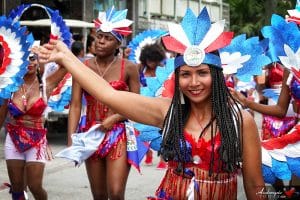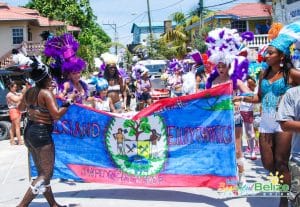Headlines
Belize Population, Official Language And More.
In the 21st century, Belize continues to face issues such as poverty, crime, corruption, environmental degradation, territorial disputes, and regional integration. However, it also enjoys a stable democracy, a vibrant civil society, a diverse tourism industry, and a rich natural and cultural heritage.

Belize

Belize
The Population
Belize has a population of about 453,000 people, making it the most sparsely populated nation in Central America.
Belize has a diverse population, composed of various ethnic groups, such as Mestizo, Creole, Maya, Garifuna, Mennonite, East Indian, Chinese, and others.
Belize has a young population, with a median age of 23.4 years and about 35% of the population under 15 years old.
Belize has a high population growth rate, estimated at 1.87% in 2020, due to high fertility and immigration.
The Landmark
Belize has many natural and cultural landmarks that attract tourists and visitors from around the world.
Some of the most famous natural landmarks are the Belize Barrier Reef, the second largest coral reef system in the world; the Great Blue Hole, a giant marine sinkhole; and the Cockscomb Basin Wildlife Sanctuary, home to the world’s first jaguar reserve.
Some of the most famous cultural landmarks are the ancient Maya ruins, such as Caracol, Lamanai, and Xunantunich; the colonial architecture of Belize City; and the Garifuna communities of Dangriga and Hopkins.
The Official Language
Belize is the only country in Central America where English is the official language. It is used for education, government, media, and business.
However, Belize is also a multilingual country, where many people speak more than one language. The most common languages are English, Spanish, Creole, Maya, Garifuna, and German.
Creole is a dialect of English that is influenced by African languages and Spanish. It is widely spoken as a first or second language by most Belizeans.
The Culture
Belize has a rich and diverse culture that reflects its history and geography. It is influenced by various elements, such as Maya, British, Spanish, African, Caribbean, Mennonite, Asian, and American cultures.
Belize has a vibrant artistic scene, with music genres such as punta rock, brukdown, paranda, and reggae; literature genres such as poetry, novels, and oral traditions; and visual arts such as painting, sculpture, and pottery.
Belize has a festive spirit, with celebrations such as Carnival, Independence Day, Garifuna Settlement Day, and Christmas. These events showcase the colorful costumes, dances, music, food, and rituals of different groups.
The Economic Stability
Belize has a small and open economy that depends largely on tourism, agriculture, fisheries, and services.
Belize has faced several economic challenges in recent years, such as low growth rates (0.3% in 2019), high public debt (95.6% of GDP in 2019), fiscal deficits (4.5% of GDP in 2019), and external imbalances (8.8% of GDP in 2019).
Belize has also been affected by the COVID-19 pandemic since 2020. It has experienced a sharp decline in tourism revenues (about 40% of GDP), a contraction in economic activity (about 14% in 2020), an increase in unemployment (29.6% in 2020), and a rise in poverty (52.9% in 2020) …
The GDP
GDP stands for Gross Domestic Product, which measures the total value of goods and services produced in a country in a given period of time.
Belize’s GDP was estimated at 2.82 billion US dollars in 2022, according to the World Bank.
Belize’s GDP per capita, which divides the GDP by the population, was estimated at 6,228 US dollars in 2022, according to the World Bank.
Belize’s GDP growth rate, which shows how fast the economy is expanding or contracting, was projected at 5.9% in 2022, according to Trading Economics.
The Currency
Belize’s currency is the Belize dollar (BZD), which is divided into 100 cents.
The Belize dollar is pegged to the US dollar at a fixed exchange rate of 2 BZD = 1 USD since 1978.
The Belize dollar is issued by the Central Bank of Belize, which also regulates the banking system and monetary policy.
The Belize dollar is accepted throughout the country, but some places may also accept US dollars or other foreign currencies.
The Food
Belize’s food is influenced by various cuisines, such as Maya, Mestizo, Creole, Garifuna, East Indian, Chinese, and British.
Some of the most common ingredients are rice, beans, corn, chicken, fish, seafood, pork, beef, cheese, eggs, coconut, plantains, cassava, and tropical fruits.
Some of the most popular dishes are rice and beans with stewed chicken; fry jacks (fried dough) with eggs and cheese; escabeche (spicy onion soup) with chicken; hudut (coconut fish soup) with mashed plantains; and salbutes (fried tortillas) with chicken and cabbage.
Some of the most popular drinks are Belikin beer; rum; seaweed shake (a milky drink made from seaweed); and fresh juices from fruits such as orange, lime, pineapple, watermelon, and soursop.
Major Cities
Belize has six districts: Belize, Cayo, Corozal, Orange Walk, Stann Creek, and Toledo.
The capital city of Belize is Belmopan, located in the Cayo district. It has a population of about 20,000 people and is the seat of government and administration.
The largest city of Belize is Belize City, located in the Belize district. It has a population of about 60,000 people and is the main port and commercial center of the country.
Other major cities include San Ignacio (the second largest city and a tourist hub in the Cayo district), Dangriga (the cultural capital of the Garifuna people in the Stann Creek district), and Punta Gorda (the southernmost town and a gateway to Maya villages in the Toledo district).
Major Airport, Seaport and Schools
The major airport of Belize is the Philip S. W. Goldson International Airport (BZE), located about 16 km from Belize City. It handles domestic and international flights to destinations such as Miami, Houston, Dallas, Los Angeles, New York, Toronto, Mexico City, Panama City, San Salvador, Guatemala City, Roatan, San Pedro Sula, Flores, and Cancun.
The major seaport of Belize is the Port of Belize City (PBC), located on the Caribbean Sea. It handles cargo and cruise ships from various countries such as the US, Mexico, Guatemala, Honduras, Nicaragua, Costa Rica, Panama, Colombia, Venezuela, Cuba, Jamaica, Haiti, Dominican Republic, Puerto Rico and others.
The major schools of Belize include primary schools (grades 1 to 8), secondary schools (grades 9 to 12), and tertiary institutions (such as universities and colleges). Some of the most notable tertiary institutions are the University of Belize (UB), Galen University (GU), St. John’s College (SJC), Wesley College (WC), Sacred Heart College (SHC), Ecumenical Junior College (EJC), Independence Junior College (IJC), Corozal Junior College (CJC), Muffles Junior College (MJC), Centro Escolar Mexico Junior College (CEMJC), Stann Creek Ecumenical Junior College (SCEJC), Toledo Community College (TCC), and others.





